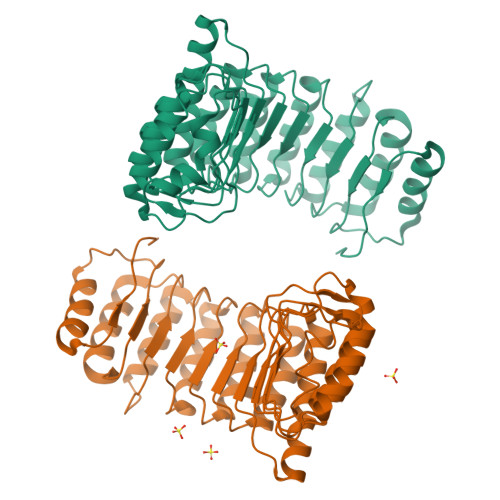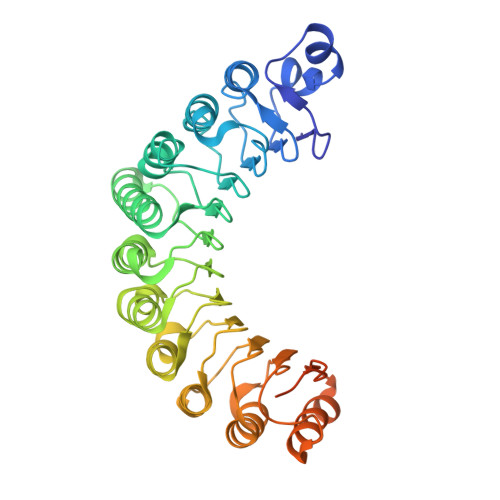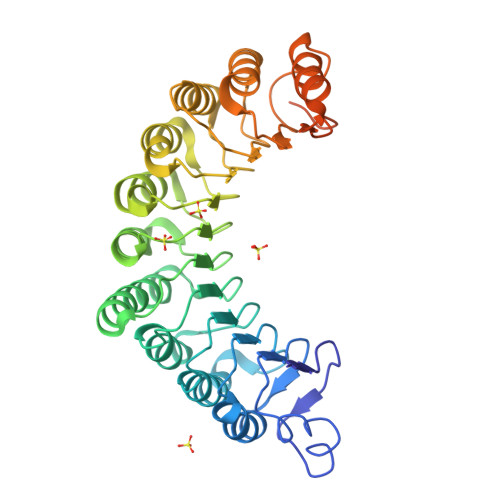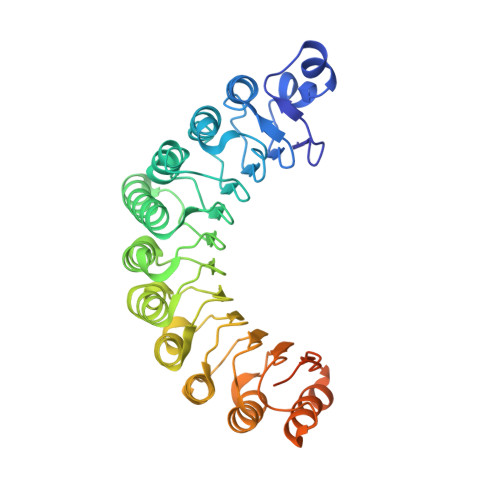Detecting and Overcoming Hemihedral Twinning During the Mir Structure Determination of RNA1P.
Hillig, R.C., Renault, L.(2006) Acta Crystallogr D Biol Crystallogr 62: 750
- PubMed: 16790931
- DOI: https://doi.org/10.1107/S0907444906016222
- Primary Citation of Related Structures:
2CA6 - PubMed Abstract:
The structure of Rna1p was originally solved to 2.7 A resolution by MIRAS from crystals with partial hemihedral twinning in space group I4(1) [Hillig et al. (1999), Mol. Cell, 3, 781-791] by finding a low-twinned native crystal (twin fraction alpha=0.06) and after twin correction of all data sets. Rna1p crystals have now been used to examine how far twinning and twin correction affect MIR phasing with a higher resolution but highly twinned native data set. Even high hemihedral twinning [alphanative=0.39, alphaderivative=0.24] would not have hindered heavy-atom site identification of strong derivatives using difference Patterson maps. However, a weaker derivative could have been missed and refinement would have stalled at high R values had twinning not been identified and accounted for. Twin correction improved both site identification, experimental phasing statistics and MIR map quality. Different strategies were tested for refinement against twinned data. Using uncorrected twinned data and TWIN-CNS, Rna1p has now been refined to 2.2 A resolution (final twinned R and Rfree were 0.165 and 0.218, respectively). The increased resolution enabled release of the NCS restraints and allowed new conclusions to be drawn on the flexibility of the two molecules in the asymmetric unit. In the case of Rna1p, twinned crystal growth was possible owing to the presence of a twofold NCS axis almost parallel to the twin operator.
Organizational Affiliation:
Schering AG Research Laboratories, 13342 Berlin, Germany. roman.hillig@schering.de


















